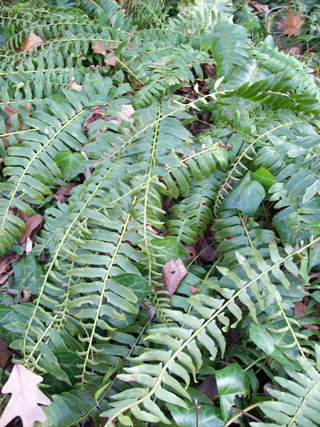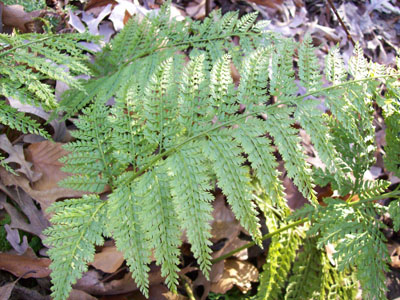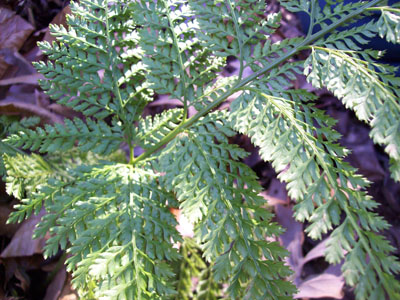Evergreens of a Different Sort

Polystichum acrostichoides is a commendable fern. Provide shade and it will grow just about everywhere from the cold hardwood forests of New England, west to the Mississippi River, and south to sultry swamplands along the Gulf of Mexico. It is one of the few ferns capable of thriving in the dry, shaded, clay soils of the southeast.
Christmas fern will grow 8-16 inches in height and twice as wide. One-pinnate blades surround the clump forming rhizome. The common name originated due to the evergreen nature. In bygone days, the fronds were frequent additions to holiday arrangements. It is also said that the individual pinnae resemble Christmas stockings.
This native fern is not only easy to grow, evergreen, and tolerant of varying soil types, but is also a conservationist at heart. The fronds remain upright through the growing season. In winter months the fronds recline to the ground, hugging the leaf litter, holding it in place to return to the soil. Currently, P. acrostichoides is being used for soil conservation along steep slopes. Christmas fern can be found growing throughout the Crum Woods as well as in numerous gardens at the Scott Arboretum.

The upside-down Fern, Arachniodes standishii. photo credit: J. Coceano
One of the greatest joys in horticulture is coming across a new plant, especially another evergreen fern. A Scott Associate recently introduced me to the upside-down Fern, Arachniodes standishii. From a distance, the fern looks like any rhizomatous species. A closer inspection leaves one questioning whether their eyesight is leaving.
According to the Fern Grower’s Manual, A. standishii is the “largest and most finely dissected cultivated species of Arachniodes.” Yes, the genus name does bear relation to spiders. Arachion is Greek for spider’s web, and –odes, means “having the form or nature of.” To this day no one is certain why this genus of 50-70 species and hybrids received their name. While certainly not new in cultivation, this rarely seen fern provides curiosity and interest. If you have an opportunity to purchase this plant, do so without hesitation. Availability is scarce due to reproductive issues. Viable spores are rarely produced.

The evergreen fronds appear to be growing upside down, hence the common name. photo credit:. J. Coceano
Hardy to zone 6, A. standishii enjoys humid summers under a shaded canopy. At Scott, the clump is growing under mature oaks amongst rhododendrons. Both of these commendable ferns will be available at the 2011 Plant Sale on September 16 to 18.





No Comments